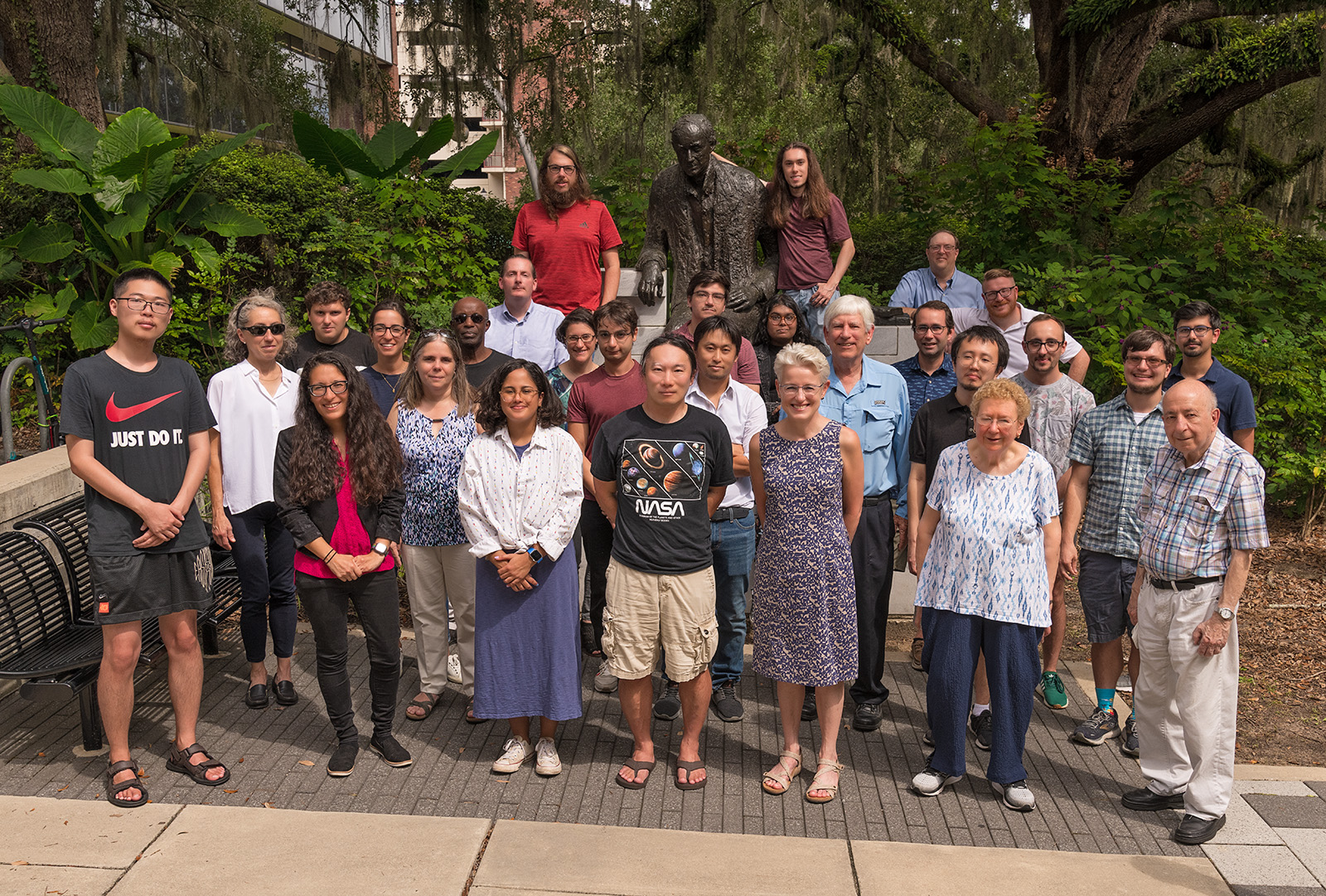
FSU High Energy Physics
Probing the Structure of the Universe
The FSU High Energy Physics (HEP) group explores the most basic constituents of the universe. Our current understanding is encapsulized in the standard model (SM) of particle physics. At FSU, we study the known particles and their interactions as well as search for evidence of physics beyond the standard model (BSM). On the theoretical side, we study the structure of nucleons, explore the phenomenology of the SM, develop new BSM concepts, and use lattice gauge calculations to attack interesting questions. On the experimental side, we work on the CMS experiment at CERN, the European particle physics laboratory. These webpages present an introduction to our group and some information about our activities.
Related Links
We seek a deeper understanding of nature through discovery and precision.
Discovery
FSU scientists have discovered new particles including the top quark (1995) and the Higgs boson (2012). We continue to probe for new signatures at the Large Hadron Collider (LHC) with the highest energy collisions ever achieved in a laboratory. We have interest in searches for supersymmetry, dark matter, extra dimensions, extra Higgs bosons, and contact interactions.

Precision
We have also probed the standard model through precision studies. For example, measurements of the Higgs boson can tell us whether the observed particle is what is expected from the SM or possibly a supersymmetric Higgs. FSU scientists have a long standing interest in the internal structure of hadrons. We are among the founders of the CTEQ collaboration to unite theorists and experimentalists to determine our best understanding of parton distribution functions (PDFs). Several measurements from members of the group are important contributions to this knowledge.

